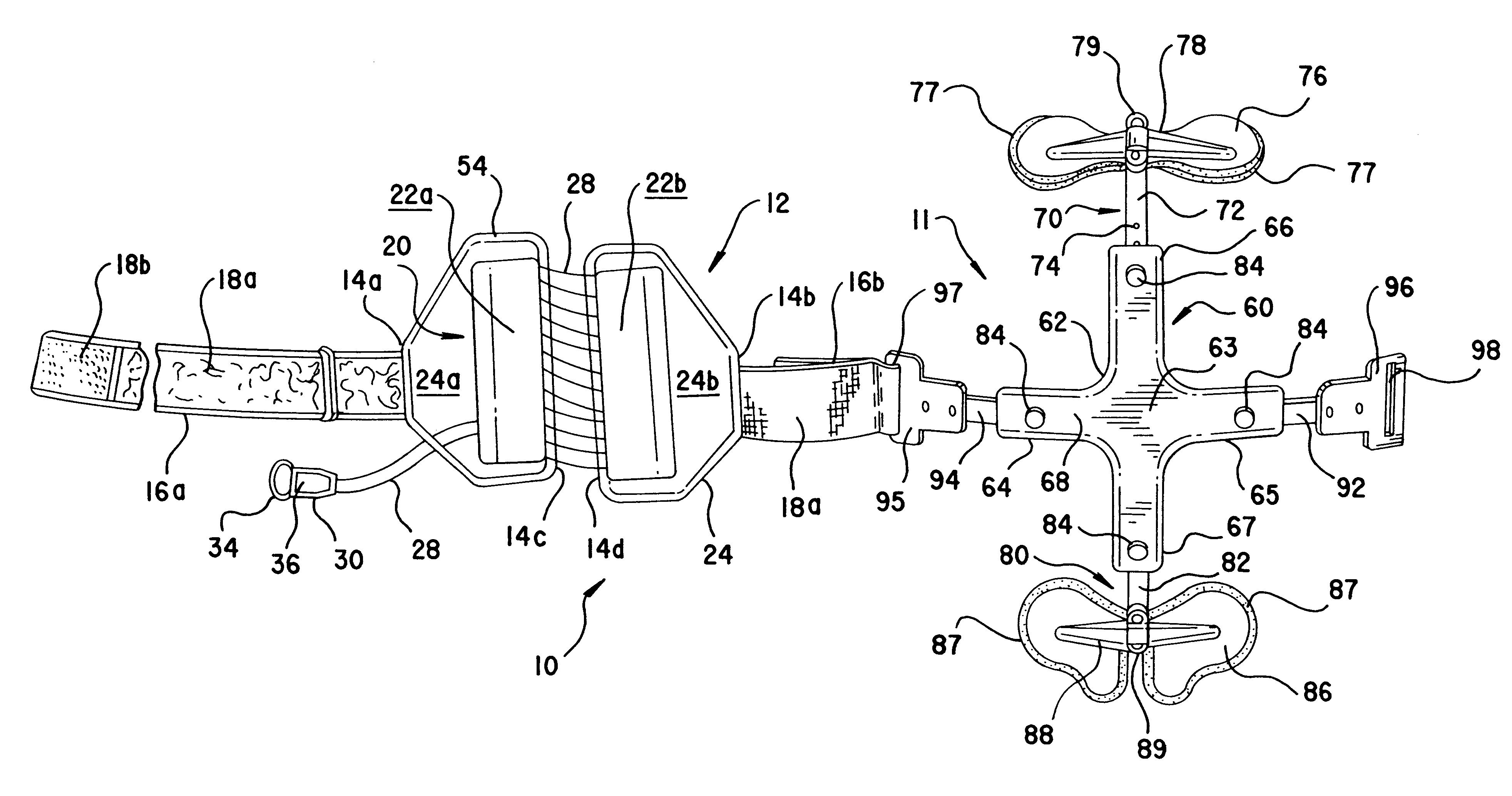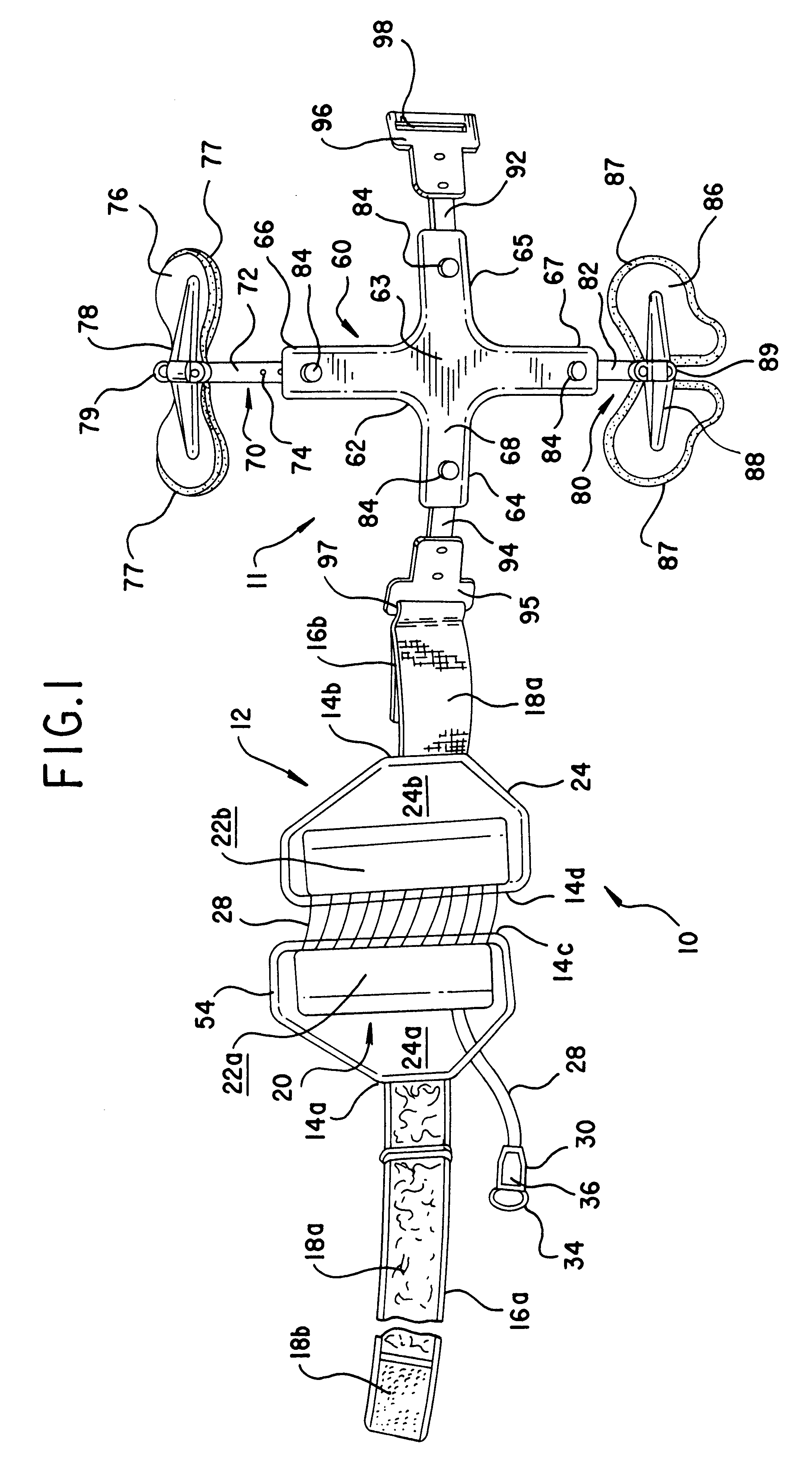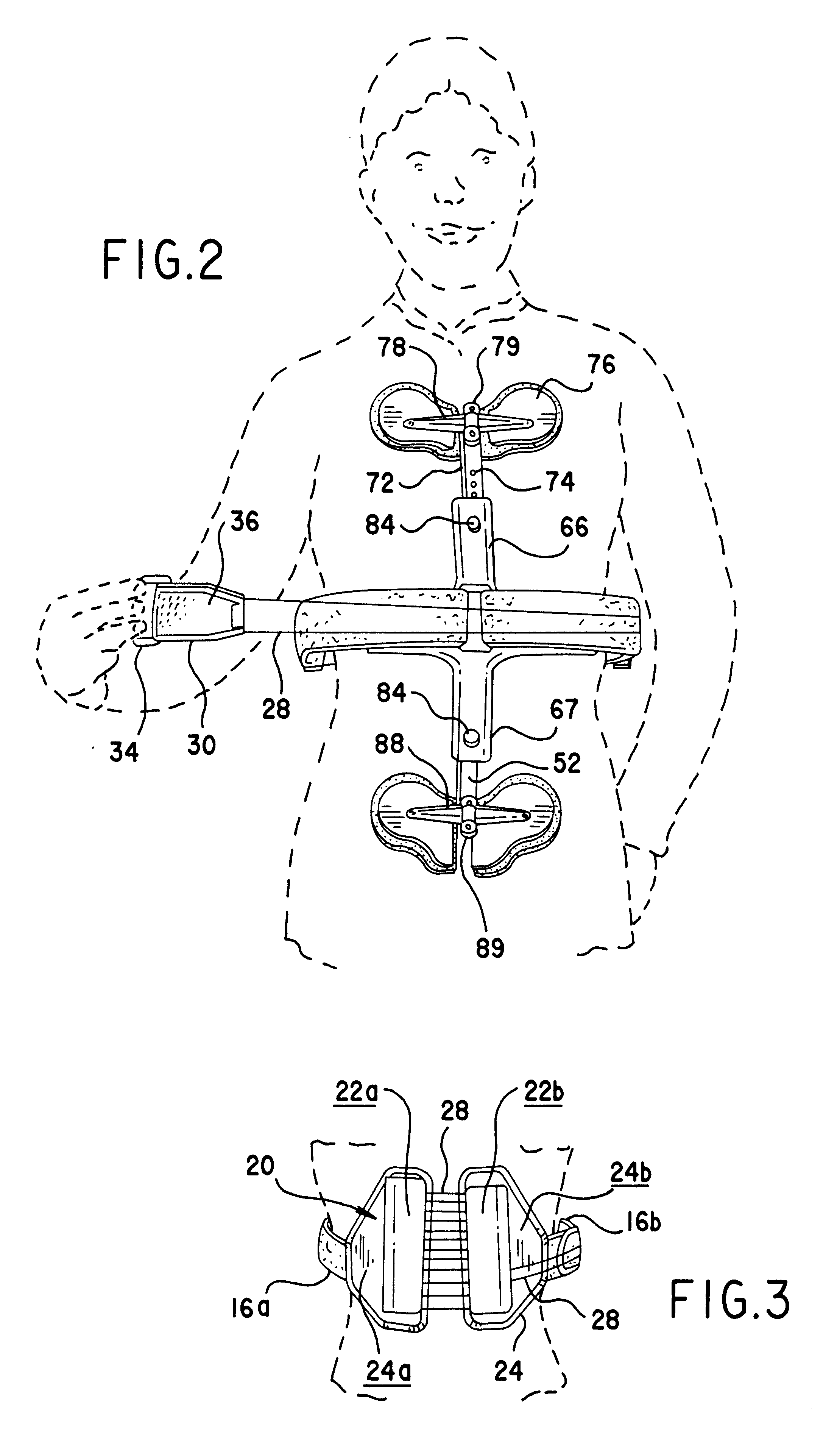Cruciform anterior spinal hyperextension orthosis
a technology of cruciform anterior spinal nerve and orthosis, which is applied in the field of braces and orthotic devices, can solve the problems of insufficient strength, inconvenient use, and insufficient manual adjustment of braces, so as to improve patient compliance, facilitate donned and doffed, and facilitate and rapid adjustment to accommoda
- Summary
- Abstract
- Description
- Claims
- Application Information
AI Technical Summary
Benefits of technology
Problems solved by technology
Method used
Image
Examples
Embodiment Construction
FIGS. 1 to 3 show a preferred embodiment according to the present invention. FIG. 1 illustrates the exterior side of a body cruciform anterior spinal hyperextension orthosis 10 in an extended position. The orthosis 10 includes a front or anterior portion 11 and a rear or posterior portion 12. The front portion 11 includes a rigid anterior cruciform brace assembly 60 which includes a cruciform-shaped centerpiece 62 having a center 63 and four arms 64, 65, 66, and 67 radiating outwardly from the center and disposed at right angles to one another. Preferably the center piece 62 is formed as a substantially rigid unitary cruciform base to which both the rear portion 12 of the cruciform anterior spinal hyperextension orthosis and the component parts of the rigid anterior cruciform brace assembly 60 are secured.
As best illustrated in FIGS. 2 and 3, the brace assembly 60 is positioned on the anterior portion of the patient's body while straps 16a and 16b secure the back portion 12 to the a...
PUM
 Login to View More
Login to View More Abstract
Description
Claims
Application Information
 Login to View More
Login to View More - R&D
- Intellectual Property
- Life Sciences
- Materials
- Tech Scout
- Unparalleled Data Quality
- Higher Quality Content
- 60% Fewer Hallucinations
Browse by: Latest US Patents, China's latest patents, Technical Efficacy Thesaurus, Application Domain, Technology Topic, Popular Technical Reports.
© 2025 PatSnap. All rights reserved.Legal|Privacy policy|Modern Slavery Act Transparency Statement|Sitemap|About US| Contact US: help@patsnap.com



